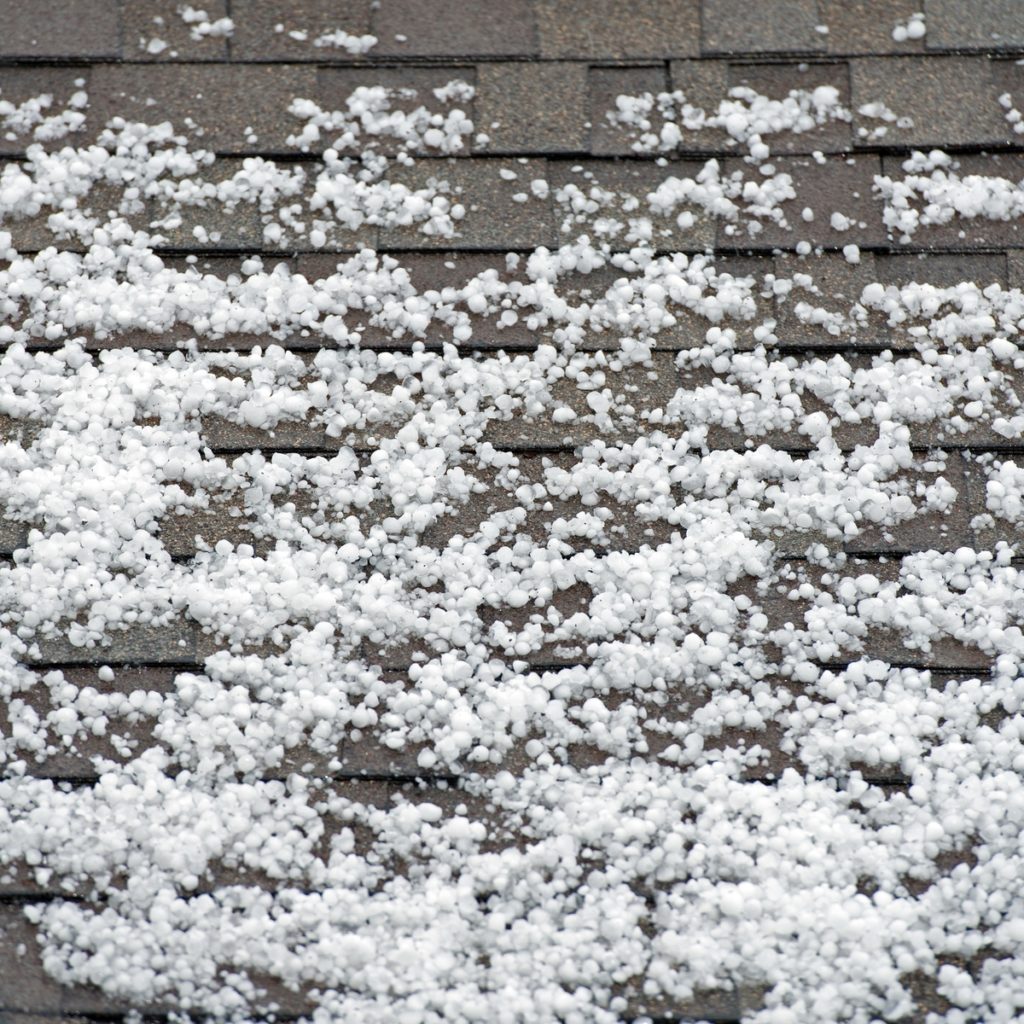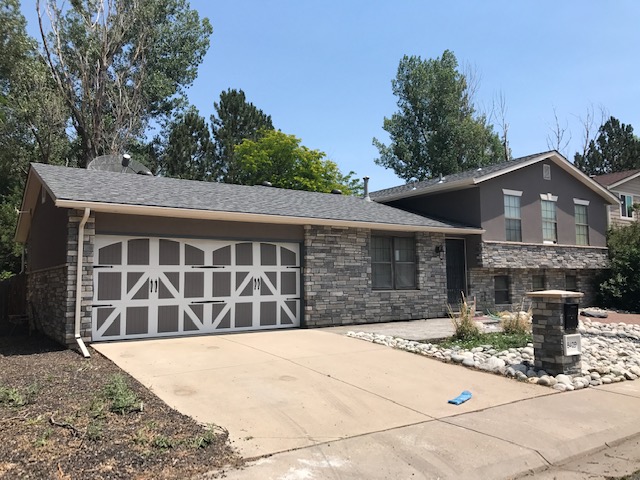A roof withstands different weather elements around the year, from scorching sun, heavy rain to snowfall and strong winds. Rough weather events like tornadoes, hailstorms, ice storms, and hurricanes can wreak havoc on the roof, causing leaks and other mild to severe damages that can compromise its structural integrity and make the home’s interiors vulnerable. A roof affected by storm damage needs immediate attention to avoid substantial issues in the future.
In this article, we discuss how to identify storm damages and what homeowners should do about them.

Common roof storm damages
Different types of storms pose unique challenges to a roof. After a storm passes, it is essential to inspect the roof for possible damages to ensure timely repairs and keep the roofing system in the best shape. Here are some of the common forms of roof storm damages homeowners should look out for:
Hail damage
A sustained hailstorm with large hail can damage a roof significantly in the form of dents, dark spots, cracks, granule loss in shingles, and siding cracks. It makes the roof susceptible to leaks, and it may require extensive repairs, and sometimes, a complete replacement. Hail damage also affects the roof surface and ruins its aesthetic appearance. Hail reduces the effectiveness of roofing materials and shortens their lifespan. An issue with hail damage is that it is difficult to identify and may go unnoticed for extended periods. Therefore, it becomes essential to call a professional roofing contractor to assess the roof condition.
Wind damage
High winds can flip, crease, or displace shingles or other roofing components, exposing the roofing structure to the weather elements and causing leaks. Spotting missing shingles or shingles lying in the yard is an obvious sign of wind damage. Strong winds also carry flying debris like tree branches and other large objects, which after falling on the roof, can cause severe damage, requiring immediate repairs. Annual roof inspections by professionals can identify issues like loose or damaged shingles. It offers homeowners time to fix them before high winds knock them off. Also, consider trimming overhanging tree branches to prevent them from falling and damaging the roof.
Rain damage
Water damage is the most common and the easiest to spot of all storm damages. Water and moisture are the biggest enemies of every roofing system. A spell of heavy rainfall can knock the granules and damage shingles, especially in old roofs. A roofing system with improper drainage or clogged gutters experiences standing water issues that allow moisture to penetrate the internal roofing layers. Rot, leaks, mold, water stains on the ceiling, uneven indoor temperatures, and structural damages indicate that the roof has experienced water damage.
What to do after a roof has suffered storm damage?
Storm damage exposes the home’s interiors to pests, water damage, debris, and other problems that can cost a significant amount of money to fix. Here is what homeowners can do after a severe storm:
Roof inspection
The first step after any severe weather event is to visually inspect the roof, attic, ceiling, gutters, vents, windows, and other areas for damage assessment. While some issues are visible to the naked eyes, others may be hidden and require expert assistance. Call a roofing contractor to thoroughly inspect the roof for signs of damages like missing shingles, leaks, granule loss, damaged gutters, missing flashing, and loose sealant. A professional can document everything to provide an estimated repair cost.
Roof storm damage repair or replacement
After inspection, a roofing contractor can carry out the required repairs as requested by the homeowner. They can handle the simple repair works or fix severe damages to restore its functionality and enhance its structural strength. Roofers can also assist homeowners in dealing with the insurance provider and work through the entire process. If the roof is old or severely damaged, they can also suggest roof replacement to protect the home and family.
It is essential to do due diligence before hiring a roofing contractor to avoid falling into the trap of unscrupulous roofers. If you suspect any storm damage to the roof, contact a roofing contractor without delay to deal with any roofing problems as soon as possible.
